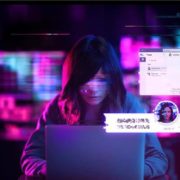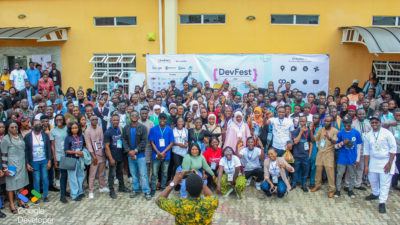By ITU News
Now more than ever, hospitals are under great stress, and the people bearing the brunt of this pandemic are the nurses and clinicians at the frontlines of patient care.
Today, 7 April 2020, is World Health Day – and an opportunity to celebrate the work of nurses and midwives and remind world leaders of the critical role they play in keeping the world healthy.
Nurses and other health workers are at the forefront of the COVID-19 response – providing high quality, respectful treatment and care, leading community dialogue to address fears and questions and, in some instances, collecting data for clinical studies. Quite simply, without nurses, there would be no response.
The world does not have a global nursing workforce commensurate with the universal health coverage and Sustainable Development Goal (SDG) targets.
In this International Year of the Nurse and the Midwife, World Health Day is highlighting the current status of nursing and around the world.
The global nursing workforce is 27.9 million – of which 19.3 million are professional nurses. Unfortunately, the world does not have a global nursing workforce commensurate with the universal health coverage and Sustainable Development Goal (SDG) targets.
The World Health Organization (WHO) today published the State of the World’s Nursing Report 2020, and says that now is an opportunity to leverage the evidence in the report and commit to an agenda that will drive and sustain progress to 2030.
The report urges governments and all relevant stakeholders to respond to changing technologies and advancing models of integrated health and social care, and that workplace policies must address the issues known to impact nurse retention in practice settings, which includes leveraging opportunities arising from digital health technology.
Technology in nursing education and practice
The WHO report shows that technology is playing an increasing role in both education and practice of the nursing workforce.
Technology can be harnessed to access clinical decision support, conduct provider-to-client telemedicine, and receive provider-to-provider training and consultation in ways that can enhance access, enable remote care, improve primary health care service delivery and empower patients.
The report says that nurses must be equipped and conversant with the digital determinants of health: these include their level of digital literacy, access to technological equipment, and Internet infrastructure, including broadband where available.
Digital health technologies, be it Artificial Intelligence or other forms such as augmented reality and the use of robotics, are already transforming nursing and patient care.
Moxi the diligent robot
Moxi is one example of how robots can make a difference. Moxi performs repetitive chores so that hospital staff can spend their time doing more important tasks.
The robot, created by Diligent Robotics, underwent trials starting in 2018, and was deployed in a hospital in Texas, United States, in February 2020. According to the Texas Department of State Health Services, Texas will face a shortage of all nurse types by 2030.
The Diligent Robotics team said “Our mission with Moxi has always been focused on relieving tasks from nurses, giving them more time to focus on patients, and today that mission has a newfound meaning and purpose.”
Some of the potentials and challenges for digital health
Findings from a Cochrane systematic review of health worker experiences of mHealth in primary health care suggest that health workers, including nurses, have appreciated the benefits of using mobile technology in their delivery of care, but have also encountered challenges.
The benefits described included being more connected to each other, taking on new tasks, improving coordination and quality of care, improved communication with clients, and accessing clients in hard-to-reach areas.
Some online or distance programmes have been shown to increase access to rural and remote clinical facilities previously not associated with a “brick and mortar” education institution.
Simultaneously, health worker accounts described multiple and complex challenges, which could be personal (such as poor digital literacy), relational (preferring face-to-face contact with clients and colleagues), professional (feeling that their clinical skills were threatened by digital clinical support tools), contextual (clients not being able to afford mobile phones), or infrastructural (lack of electricity).
While technological advances offer many benefits, health worker accounts included in this systematic review suggest that health system decision-makers need to think carefully about how it is implemented in their context so as to minimize the challenges experienced by health workers, including nurses.
Health education institutions and regulators leveraging technology
The WHO report states that the digital provision of educational and training content can usefully complement traditional methods. Technologies such as artificial intelligence can allow learning to be personalized, relevant and up to date.
Online distance education programmes, the WHO report says, should be monitored and held to the same accreditation and quality standards as other education institutions.
The success of such efforts at “distributed learning” will require ensuring that students acquire a minimum level of digital health literacy as part of their education, that the curriculum design makes use of relevant digital and telehealth learning for the requisite competencies with support and supervision for clinical training, and that the institutional and infrastructural resources needed to enable a bridging of the digital divide are in place.
Online distance education programmes, the WHO report says, should be monitored and held to the same accreditation and quality standards as other education institutions.
Remote learning and gaining real clinical experience
Because many nursing programmes are located in urban areas, providing appropriate clinical experiences in rural or remote facilities can be challenging.
Some online or distance programmes have been shown to increase access to rural and remote clinical facilities previously not associated with a “brick and mortar” education institution.
Alternatively, telehealth technology and simulation laboratories can provide appropriate and complementary clinical experiences in primary care.
Science and technology – new fundamentals for nurses
Relevant ministries, such as the education and health ministries, says the WHO report, can strengthen formal coordination to promote science and technology as fundamentals of the nursing profession, to market nursing as a STEM (science, technology, engineering, mathematics) field, and to put in place mechanisms to attract a diverse range of secondary school students to nursing.
RELATED: COVID-19: How mobile phone contact tracing can save lives – and preserve privacy
Public–private partnerships can help source sites for clinical training in primary health care settings; engagement with other health occupation education programmes can help make these clinical practicums inter-professional.
Future nursing workforce policies
Nurse education and training programmes must graduate nurses who drive progress in primary health care and universal health coverage.
Curricula should be aligned with national health priorities as well as emerging global issues to prepare nurses to work effectively in inter-professional teams and maximize graduate competencies in health technology.
Countries should enable nurses to work to the full extent of their education and training, and nurses should have access to the required resources, including online reference materials and the appropriate technology.
Finally, the WHO reports says that workplace policies must address the issues known to impact nurse retention in practice settings; this includes the support required for nurse-led models of care and advanced practice roles and leveraging opportunities arising from digital health technology, and taking into account ageing patterns within the nursing workforce.
Source: ITU – https://news.itu.int/covid-19-how-tech-is-helping-nurses/
Photo by Getty Images/Ariel Skelley






























